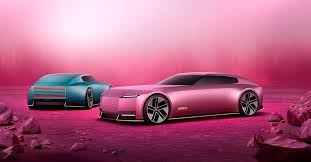The Evolution of the Electric Vehicle Industry and Future Focus Areas
The electric vehicle (EV) industry has come a long way from its niche beginnings to becoming a central pillar of the global transition to sustainable transportation. As governments, manufacturers, and consumers increasingly recognize the need for decarbonization, the EV industry is at the forefront of this transformative shift. This blog explores the historical development of the EV sector, the current state of the industry, and the key focus areas needed to achieve ambitious global EV adoption targets.
A Brief History of the EV Industry
The concept of electric vehicles is not new. The first EVs emerged in the late 19th century and enjoyed a brief period of popularity due to their simplicity compared to early internal combustion engine (ICE) cars. However, by the early 20th century, advancements in ICE technology, the discovery of vast petroleum reserves, and the mass production of gasoline-powered cars, particularly by Ford, led to the decline of EVs.
Interest in electric mobility resurged in the late 20th century due to environmental concerns and the 1970s oil crisis. The launch of vehicles like the GM EV1 in the 1990s marked a significant turning point, even though commercial success was limited at the time. In the 2000s, improved battery technologies, heightened environmental awareness, and government incentives fueled a new era for EVs. Tesla’s introduction of the Roadster in 2008 showcased the potential of EVs to offer high performance, luxury, and practicality, setting the stage for widespread innovation.
The Current Landscape
Today, the EV industry is booming, with global sales surpassing 10 million units annually as of 2023. The market includes a wide range of players, from traditional automakers like Ford, GM, and Toyota to EV specialists like Tesla, Rivian, and BYD. In addition, technological advancements in lithium-ion batteries have drastically reduced costs, increased energy density, and extended driving ranges, making EVs more accessible to the average consumer.
Governments worldwide have set ambitious EV adoption targets, such as the European Union’s goal to phase out ICE vehicle sales by 2035 and China’s push for EVs to comprise 40% of all vehicle sales by 2030. These targets are underpinned by various incentives, including tax rebates, charging infrastructure investments, and regulatory mandates like emissions standards.
Despite these strides, the industry faces significant challenges. Supply chain disruptions, critical mineral shortages, and inadequate charging networks remain barriers to mass adoption. Additionally, ensuring affordability for consumers in emerging markets is critical to achieving global penetration.

Key Focus Areas to Hit Global EV Targets
To meet global EV adoption goals and achieve net-zero emissions, stakeholders must address the following key areas:
Battery Technology and Supply Chains
Advancing Battery Chemistry: Investing in next-generation batteries like solid-state, sodium-ion, or lithium-sulfur could improve energy density, reduce costs, and eliminate reliance on scarce minerals like cobalt.
Scaling Recycling Efforts: Establishing efficient battery recycling systems to recover critical materials can reduce environmental impact and mitigate supply chain risks.
Securing Raw Materials: Developing sustainable mining practices and diversifying sources of critical minerals is essential to meet soaring demand.
Charging Infrastructure
Expanding Networks: Building widespread and reliable charging stations, including high-speed DC chargers, in urban, suburban, and rural areas is critical.
Standardization: Harmonizing charging standards across regions can enhance interoperability and convenience for users.
Grid Integration: Enhancing grid capacity and adopting smart charging technologies can manage peak demand and support renewable energy integration.
Policy and Incentives
Extending Subsidies: Continued government incentives can bridge the cost gap between EVs and ICE vehicles, particularly in developing markets.
Regulatory Measures: Setting stricter emissions targets and zero-emission vehicle mandates can drive adoption.
Equity in Access: Ensuring that low-income communities benefit from EV incentives and infrastructure development is critical for equitable transition.
Consumer Education and Awareness
Addressing Misconceptions: Educating consumers about EV benefits, including lower operating costs and environmental impact, can accelerate adoption.
Highlighting TCO: Communicating the total cost of ownership advantages over ICE vehicles can address upfront cost concerns.
Innovation in Vehicle Segments
Expanding Options: Developing affordable EV models, including two-wheelers, three-wheelers, and commercial vehicles, can cater to a broader audience.
Autonomous and Connected EVs: Integrating advanced technologies can enhance user experiences and operational efficiencies.
The Road Ahead
The path to a fully electrified transport sector is ambitious but achievable with coordinated efforts. The EV industry’s growth demonstrates the potential for innovation and collaboration across sectors, from technology development to policy-making. By focusing on battery advancements, infrastructure expansion, equitable access, and global cooperation, the world can transition to a cleaner, more sustainable future of mobility.
As we progress, the journey of the EV industry will continue to inspire transformation not just in transportation but in energy, urban planning, and beyond—a testament to the power of innovation and the collective will to address climate change.
Written by Zoom EV Team
28/01/25



